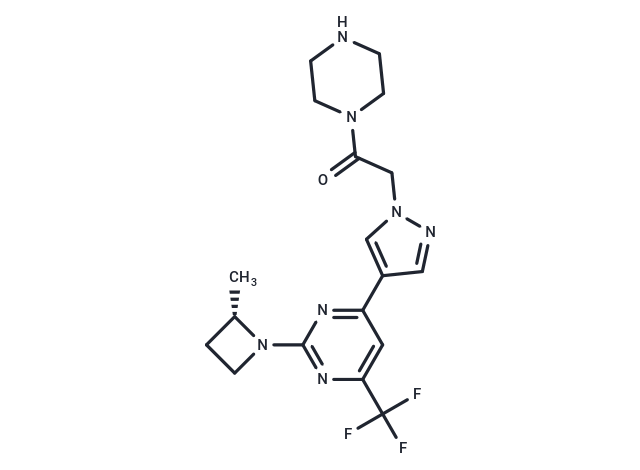Shopping Cart
- Remove All
 Your shopping cart is currently empty
Your shopping cart is currently empty

KHK-IN-3 (Example 1), a ketohexokinase (KHK) inhibitor, plays a crucial role in the study of various diseases including kidney disease, nonalcoholic steatohepatitis (NASH), diabetes, and heart failure. KHK, a pivotal rate-limiting enzyme and fructokinase, facilitates the metabolism of fructose by catalyzing the transformation of fructose into fructose-1-phosphate (FIP) utilizing ATP. This process lacks feedback inhibition, leading to the buildup of metabolites involved in lipogenesis, gluconeogenesis, and oxidative phosphorylation [1].

| Pack Size | Price | Availability | Quantity |
|---|---|---|---|
| 10 mg | Inquiry | 10-14 weeks | |
| 50 mg | Inquiry | 10-14 weeks |
| Description | KHK-IN-3 (Example 1), a ketohexokinase (KHK) inhibitor, plays a crucial role in the study of various diseases including kidney disease, nonalcoholic steatohepatitis (NASH), diabetes, and heart failure. KHK, a pivotal rate-limiting enzyme and fructokinase, facilitates the metabolism of fructose by catalyzing the transformation of fructose into fructose-1-phosphate (FIP) utilizing ATP. This process lacks feedback inhibition, leading to the buildup of metabolites involved in lipogenesis, gluconeogenesis, and oxidative phosphorylation [1]. |
| Alias | KHK-IN-3 |
| Molecular Weight | 409.41 |
| Formula | C18H22F3N7O |
| Cas No. | 2568608-48-8 |
| Storage | Powder: -20°C for 3 years | In solvent: -80°C for 1 year | Shipping with blue ice. |

Copyright © 2015-2025 TargetMol Chemicals Inc. All Rights Reserved.